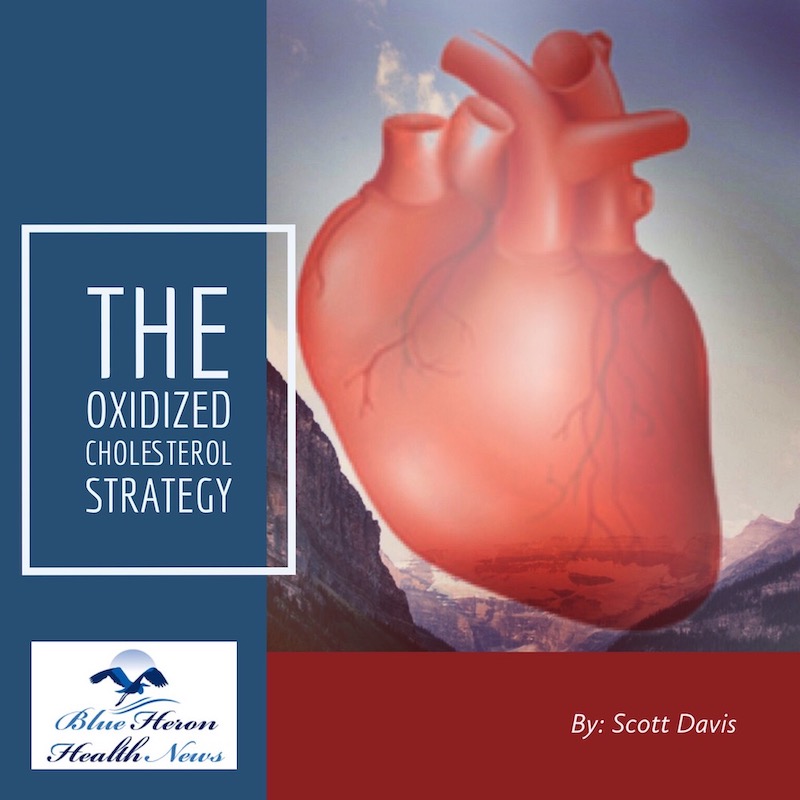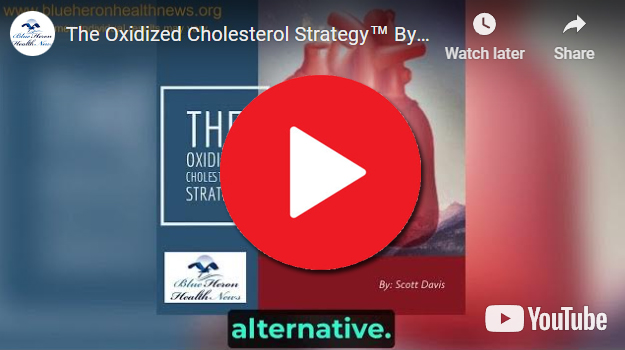
The Oxidized Cholesterol Strategy™ By Scott Davis The Oxidized Cholesterol Strategy is a well-researched program that reveals little known secret on how to tackle cholesterol plaque. This program will tell you step by step instructions on what you need to completely clean plaque buildup in your arteries so as to drop your cholesterol to healthy level.
How does cholesterol become oxidized?
Introduction
Cholesterol oxidation is a crucial process in understanding the pathophysiology of several chronic diseases, particularly cardiovascular diseases. Oxidized cholesterol (oxysterols) plays a significant role in the development of atherosclerosis, leading to conditions such as coronary artery disease, stroke, and peripheral artery disease. This comprehensive exploration delves into the mechanisms behind cholesterol oxidation, sources and types of oxidized cholesterol, biological impacts, and strategies to mitigate its formation and effects.
Chemistry of Cholesterol and Its Oxidation
Structure of Cholesterol
Cholesterol is a lipid molecule with a complex structure, comprising four hydrocarbon rings (steroid nucleus) and a hydrocarbon tail:
- Hydroxyl Group: Attached to the third carbon of the A-ring, rendering cholesterol an alcohol.
- Double Bond: Between the fifth and sixth carbons in the B-ring.
- Hydrocarbon Tail: Extends from the seventeenth carbon, contributing to the molecule’s hydrophobic properties.
Oxidation Mechanisms
Cholesterol oxidation involves the addition of oxygen molecules, leading to the formation of various oxidized derivatives known as oxysterols. This process occurs through enzymatic and non-enzymatic pathways:
- Non-Enzymatic Oxidation: Primarily driven by reactive oxygen species (ROS) such as free radicals. These are generated during normal metabolic processes and from external sources like pollution, radiation, and smoking.
- Enzymatic Oxidation: Involves specific enzymes, such as cytochrome P450 oxidases, which oxidize cholesterol to form different oxysterols.
Sources of Oxidized Cholesterol
Oxidized cholesterol can be endogenous (produced within the body) or exogenous (introduced from outside the body).
Endogenous Sources
- Lipid Peroxidation: Oxidative stress within the body leads to the peroxidation of lipids, including cholesterol, resulting in oxysterol formation.
- Enzymatic Activity: Certain enzymes in the body, such as cholesterol 25-hydroxylase, are capable of oxidizing cholesterol, contributing to the pool of endogenous oxysterols.
Exogenous Sources
- Dietary Intake: Foods high in cholesterol, particularly those that are processed, cooked at high temperatures, or exposed to air for extended periods, contain oxidized cholesterol. Examples include:
- Fried Foods: Deep-fried foods often have high levels of oxidized cholesterol due to high cooking temperatures and prolonged exposure to air.
- Processed Meats: Sausages, bacon, and other processed meats can contain oxidized cholesterol.
- Dairy Products: Butter, cheese, and other dairy products can become oxidized during processing and storage.
- Cooking Methods: Methods such as frying, grilling, and roasting can increase cholesterol oxidation in foods.
Oxidation Pathways of Cholesterol
Cholesterol can undergo oxidation through several specific pathways, leading to the formation of various oxysterols.
Autoxidation
Autoxidation is a spontaneous chemical reaction where cholesterol reacts with oxygen in the absence of enzymes:
- Reactive Oxygen Species (ROS): Free radicals such as superoxide anion (O2•−), hydroxyl radical (OH•), and hydrogen peroxide (H2O2) initiate the autoxidation of cholesterol.
- Lipid Peroxides: The initial reaction forms lipid peroxides, which further degrade into secondary products, including aldehydes and ketones.
Enzymatic Oxidation
Enzymatic oxidation involves specific enzymes that facilitate the oxidation of cholesterol:
- Cytochrome P450 Oxidases: These enzymes catalyze the hydroxylation of cholesterol to form oxysterols. Notable examples include:
- Cholesterol 7α-Hydroxylase (CYP7A1): Converts cholesterol to 7α-hydroxycholesterol, a precursor for bile acid synthesis.
- Sterol 27-Hydroxylase (CYP27A1): Produces 27-hydroxycholesterol, involved in bile acid synthesis and cholesterol homeostasis.
- Cholesterol 25-Hydroxylase (CH25H): Catalyzes the formation of 25-hydroxycholesterol, which plays a role in immune regulation and cholesterol metabolism.
Biological Impacts of Oxidized Cholesterol
Oxidized cholesterol has significant biological effects, particularly concerning cardiovascular health.
Atherosclerosis
Oxidized cholesterol is a key player in the development of atherosclerosis:
- Endothelial Dysfunction: Oxidized cholesterol impairs endothelial function, reducing nitric oxide production and promoting vascular inflammation.
- Formation of Foam Cells: Macrophages ingest oxidized low-density lipoprotein (oxLDL) via scavenger receptors, transforming into foam cells. These cells accumulate in the arterial intima, forming fatty streaks.
- Plaque Formation: Continued accumulation of foam cells, along with smooth muscle cell migration and extracellular matrix deposition, leads to the formation of atherosclerotic plaques.
Inflammation
Oxidized cholesterol promotes inflammation through various mechanisms:
- Cytokine Production: It stimulates the release of pro-inflammatory cytokines such as interleukin-6 (IL-6) and tumor necrosis factor-alpha (TNF-α).
- Oxidative Stress: It exacerbates oxidative stress, further promoting inflammatory responses.
Immune Response
Oxidized cholesterol influences the immune system:
- Immune Cell Recruitment: It attracts immune cells, including monocytes and T cells, to the site of inflammation.
- Immune Modulation: Certain oxysterols modulate immune responses, affecting both innate and adaptive immunity.
Diagnostic Methods
Identifying and measuring oxidized cholesterol levels in the body is important for assessing cardiovascular risk and managing health.
Blood Tests
- Oxidized LDL (oxLDL) Levels: Specialized blood tests measure oxLDL levels, which are markers of oxidative stress and cardiovascular risk.
- Oxysterol Levels: Advanced analytical techniques, such as liquid chromatography-mass spectrometry (LC-MS), quantify specific oxysterols in the blood.
Imaging Techniques
- Coronary Artery Calcium (CAC) Scoring: A non-invasive imaging technique measuring calcium in coronary arteries, indirectly indicating atherosclerosis.
- Carotid Intima-Media Thickness (CIMT): An ultrasound-based method to measure carotid artery wall thickness, indicating the presence of atherosclerosis.
Prevention and Management
Preventing and managing the effects of oxidized cholesterol involves lifestyle changes, dietary adjustments, and medical interventions.
Lifestyle Changes
- Antioxidant-Rich Diet: Consuming foods rich in antioxidants helps neutralize free radicals and reduce oxidative stress. Examples include fruits, vegetables, nuts, and seeds.
- Regular Exercise: Physical activity improves cardiovascular health and reduces oxidative stress.
- Avoiding Smoking and Excessive Alcohol: Both increase oxidative stress and should be avoided.
Dietary Adjustments
- Reduce Intake of Oxidized Cholesterol: Limiting foods high in oxidized cholesterol, such as fried foods and processed meats, reduces exposure.
- Healthy Cooking Methods: Opting for cooking methods that minimize cholesterol oxidation, such as steaming, boiling, and baking.
- Increase Intake of Healthy Fats: Consuming healthy fats from sources like olive oil, avocados, and fatty fish improves lipid profiles and reduces cardiovascular risk.
Medical Interventions
- Statins: These medications lower cholesterol levels and have antioxidant properties, reducing oxidized cholesterol formation.
- Antioxidant Supplements: Supplements like vitamin E, vitamin C, and coenzyme Q10 may reduce oxidative stress and oxidized cholesterol formation.
- Anti-Inflammatory Medications: Medications reducing inflammation help manage oxidized cholesterol’s effects on arterial walls.
Role of Antioxidants in Preventing Cholesterol Oxidation
Antioxidants play a crucial role in preventing the oxidation of cholesterol by neutralizing free radicals and reducing oxidative stress.
Dietary Antioxidants
- Vitamin E: A fat-soluble antioxidant that protects cell membranes and lipoproteins from oxidative damage. Found in nuts, seeds, and vegetable oils.
- Vitamin C: A water-soluble antioxidant that regenerates vitamin E and protects against lipid peroxidation. Found in citrus fruits, berries, and green vegetables.
- Polyphenols: Plant-based antioxidants found in fruits, vegetables, tea, and red wine. They have strong free radical-scavenging properties.
Endogenous Antioxidants
- Glutathione: A tripeptide that acts as a major cellular antioxidant, protecting against oxidative damage.
- Superoxide Dismutase (SOD): An enzyme that catalyzes the dismutation of superoxide radicals into oxygen and hydrogen peroxide, reducing oxidative stress.
- Catalase: An enzyme that converts hydrogen peroxide into water and oxygen, preventing oxidative damage.
Research and Future Directions
Research continues to explore the mechanisms behind cholesterol oxidation, its role in disease, and potential therapeutic strategies.
Mechanistic Studies
- Oxidation Pathways: Further understanding of the specific pathways and factors involved in cholesterol oxidation.
- Oxysterol Function: Investigating the diverse biological functions and signaling pathways of different oxysterols.
Therapeutic Approaches
- Antioxidant Therapy: Developing targeted antioxidant therapies to reduce oxidative stress and prevent cholesterol oxidation.
- Gene Therapy: Exploring gene editing techniques to modulate the expression of enzymes involved in cholesterol oxidation.
Preventive Strategies
- Public Health Initiatives: Promoting awareness of the risks associated with oxidized cholesterol and encouraging lifestyle changes to reduce exposure.
- Nutritional Guidelines: Developing dietary guidelines to minimize the intake of oxidized cholesterol and promote antioxidant-rich foods.
Conclusion
Cholesterol oxidation is a critical process with significant implications for cardiovascular health and other chronic diseases. Understanding the mechanisms behind cholesterol oxidation, the sources of oxidized cholesterol, and its biological impacts is essential for developing effective prevention and management strategies. By adopting healthy lifestyle practices, making dietary adjustments, and utilizing medical interventions, individuals can mitigate the adverse effects of oxidized cholesterol and improve their overall health. Continued research and public health efforts are crucial for advancing our knowledge and promoting strategies to reduce the burden of diseases associated with oxidized cholesterol.
The Oxidized Cholesterol Strategy™ By Scott Davis The Oxidized Cholesterol Strategy is a well-researched program that reveals little known secret on how to tackle cholesterol plaque. This program will tell you step by step instructions on what you need to completely clean plaque buildup in your arteries so as to drop your cholesterol to healthy level.
